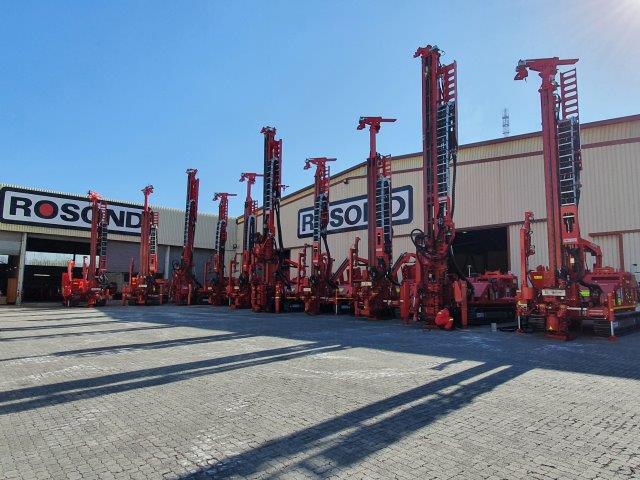Rosond of Midrand, South Africa, is combining automation, software, data analytics and machine learning to create a next-generation drill rig that will help transition the company from contractor to technology provider.
The company dispatched the final batch of 28 state-of-the-art drill rigs to Anglo American’s majority owned Kumba Iron Ore operations in the Northern Cape in December, to be rolled out at Kumba’s Kolomela and Sishen iron ore mines. This forms part of a R2 billion ($134 million), five-year tender clinched by Rosond to supply Anglo American with the latest drilling technology as it modernises its geoscience operations.
“We really believe that this is going to be a future game changer,” Ricardo Ribeiro, Managing Director of Rosond, said.
In the face of COVID-19 lockdown restrictions, Rosond said it was able to compress a year’s work into six months. It collaborated with a leading Italian manufacturer to develop the advanced drill rigs, which will be deployed for core, percussion and reverse circulation drilling.
“I am happy to report that the last two drill rigs were dispatched in December 2020,” Ribeiro added. “We are excited to see the entire fleet operational early this year. These are some of the most highly-advanced exploration drill rigs in the world.”
The drill rigs feature increased safety with the automation of most of the arduous and dangerous manual labour involved, Rosond says, taking away the need to handle the drill rods, and load and unload heavy equipment from the drill rigs.
The rig operators are housed in a climate-controlled, air-conditioned control room for an improved work environment that, in turn, assists with fatigue management and also boosts productivity and accuracy, Rosond says.
The opportunity to build such rigs also arose with several women being deployed as part of a team at Kumba. Recruiting and training this team formed part of Rosond’s tender with Anglo American, Ribeiro explained.
Rosond took the strategic step in 2012 to begin developing new technology for the drilling and exploration sectors, with the drill rigs leveraging the latest developments in software, telemetry and automation.
“We brought in a lot of technology from the construction and oil and gas industries to develop specific functionalities such as dust suppression and automation, as well as software and telemetry systems,” Ribeiro said.
The 28-strong fleet at Kumba will be deployed in an 80 km radius to optimise exploration drilling by providing critical geological data about the sites under investigation, Rosond says.
Having successfully developed the hardware of the new drill rigs themselves, the future plan is to launch a software division to focus on the application of data analytics and artificial intelligence in optimising the drilling process, as well as promoting machine learning.
“We are optimistic that in the future our drill rigs will be able to identify all the necessary parameters in order to be able to guide the operators seamlessly,” Ribeiro said. “The end goal in our development process is to have a full autonomous drill rig.”











